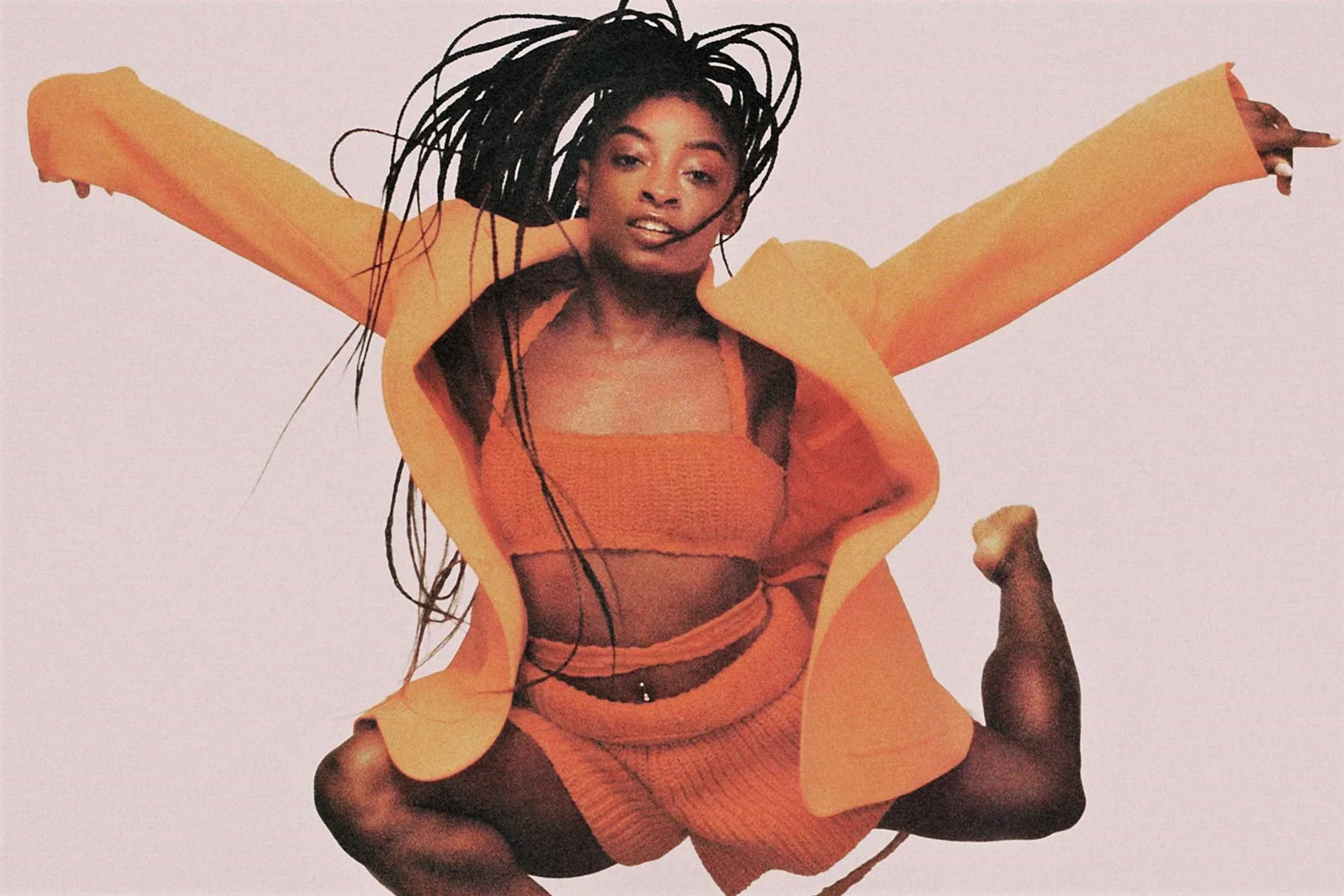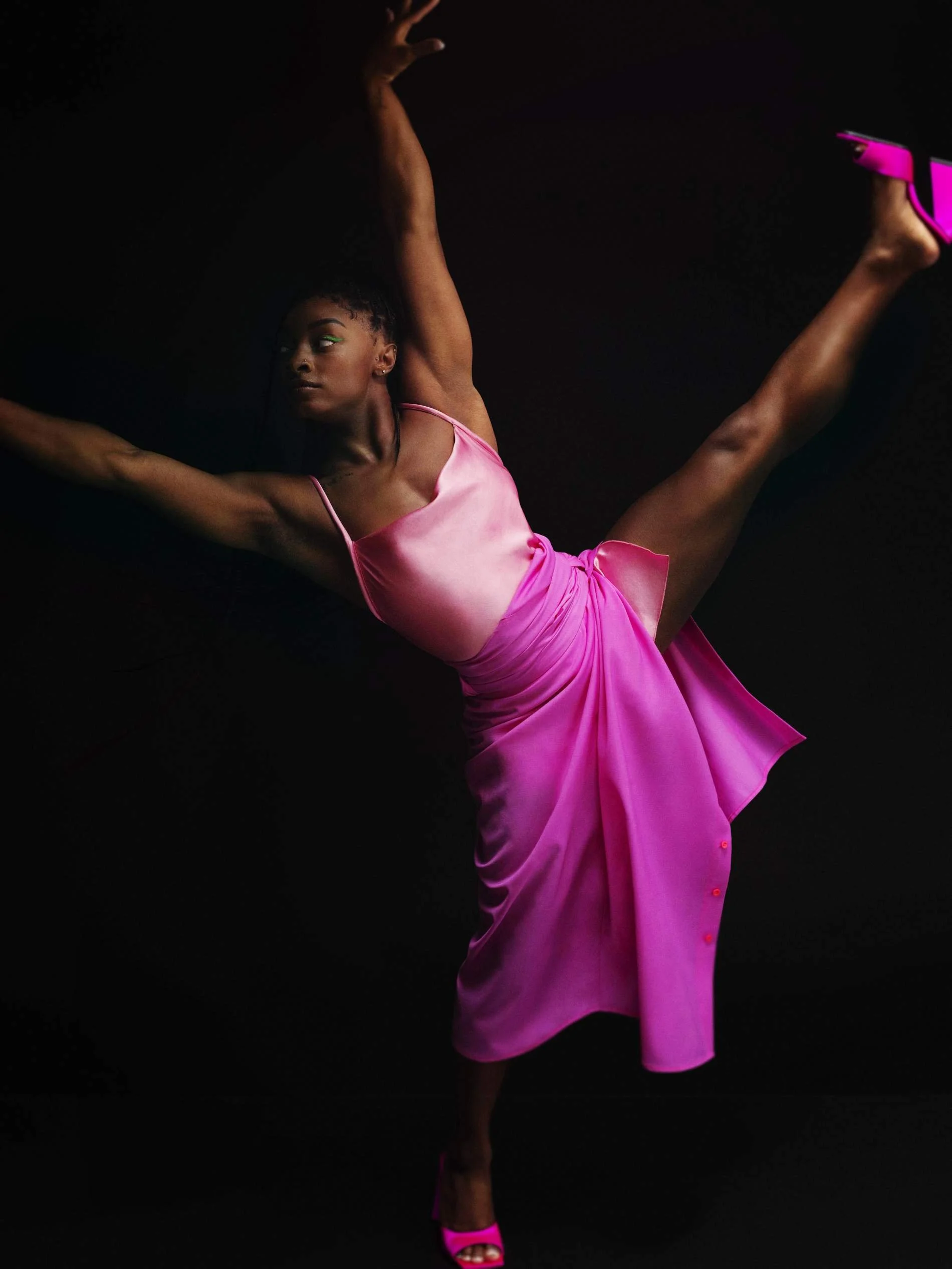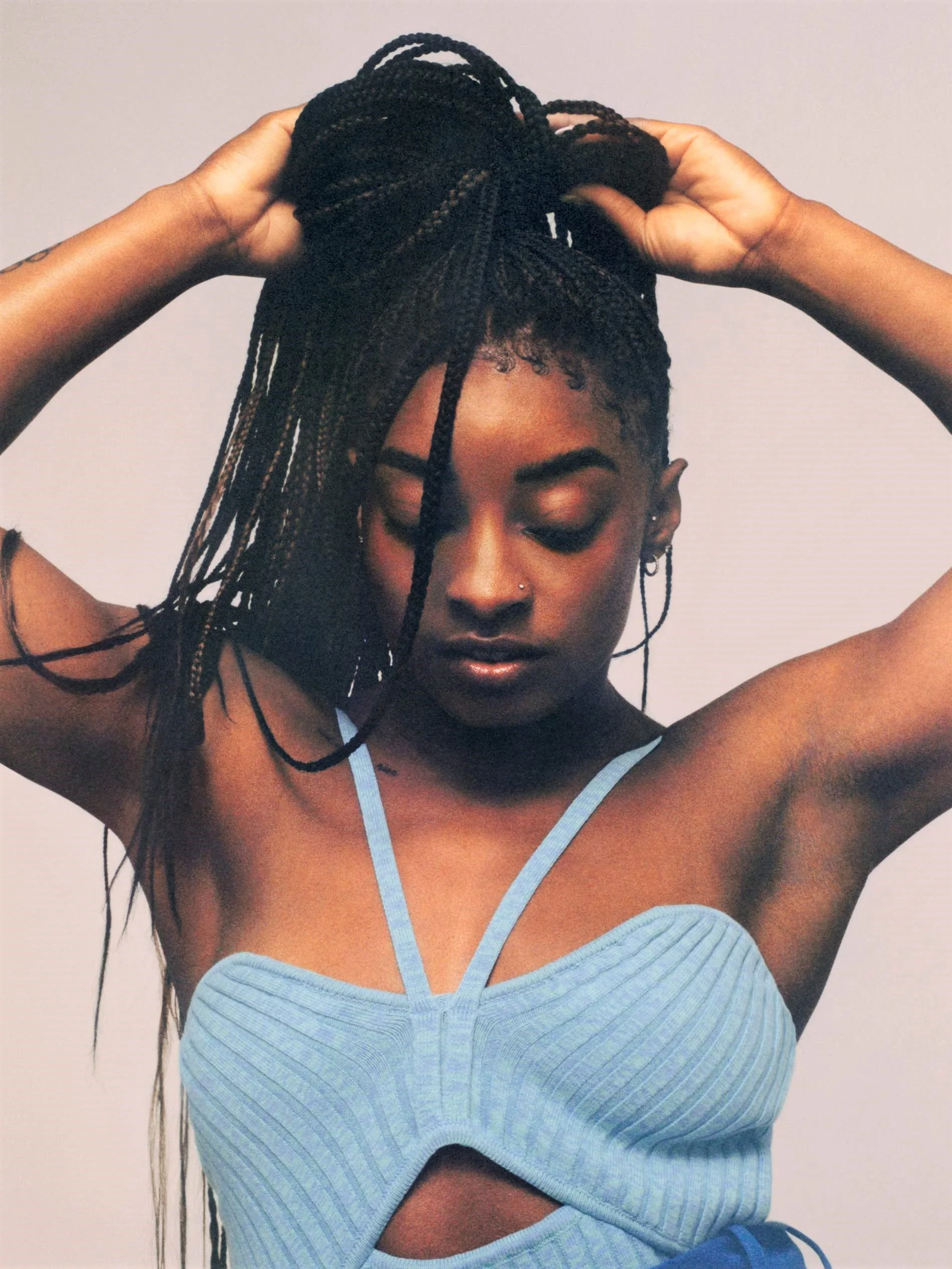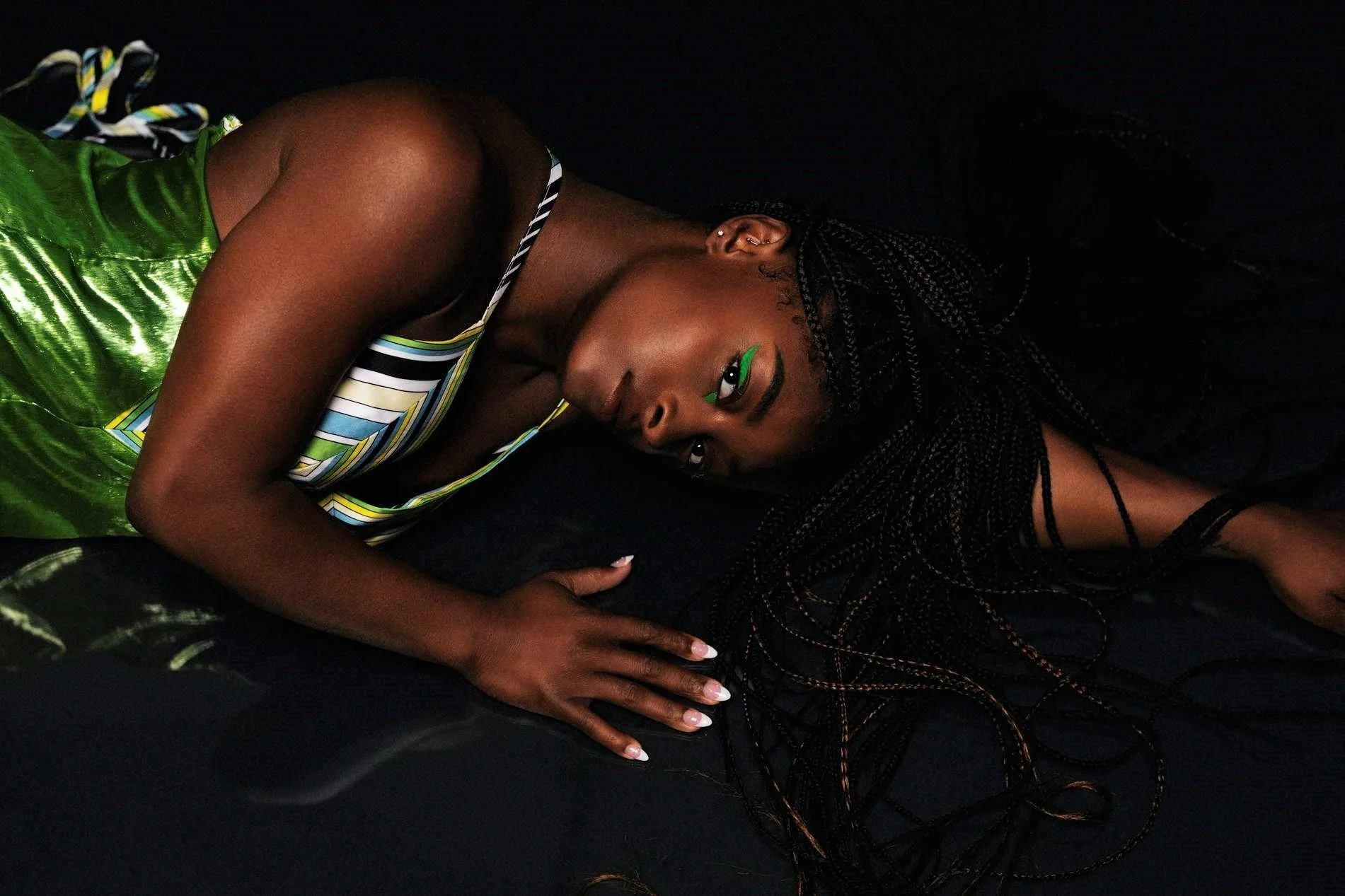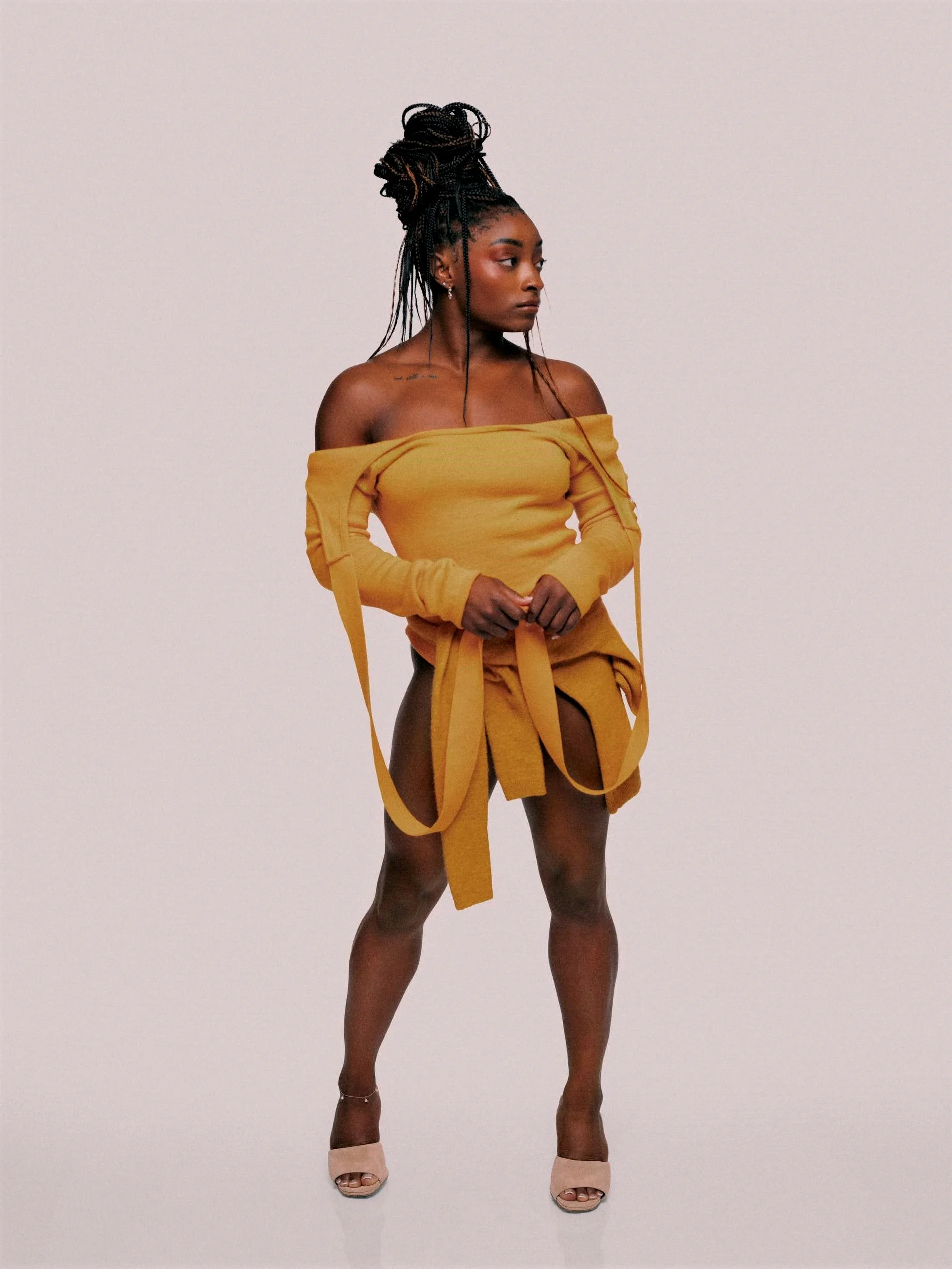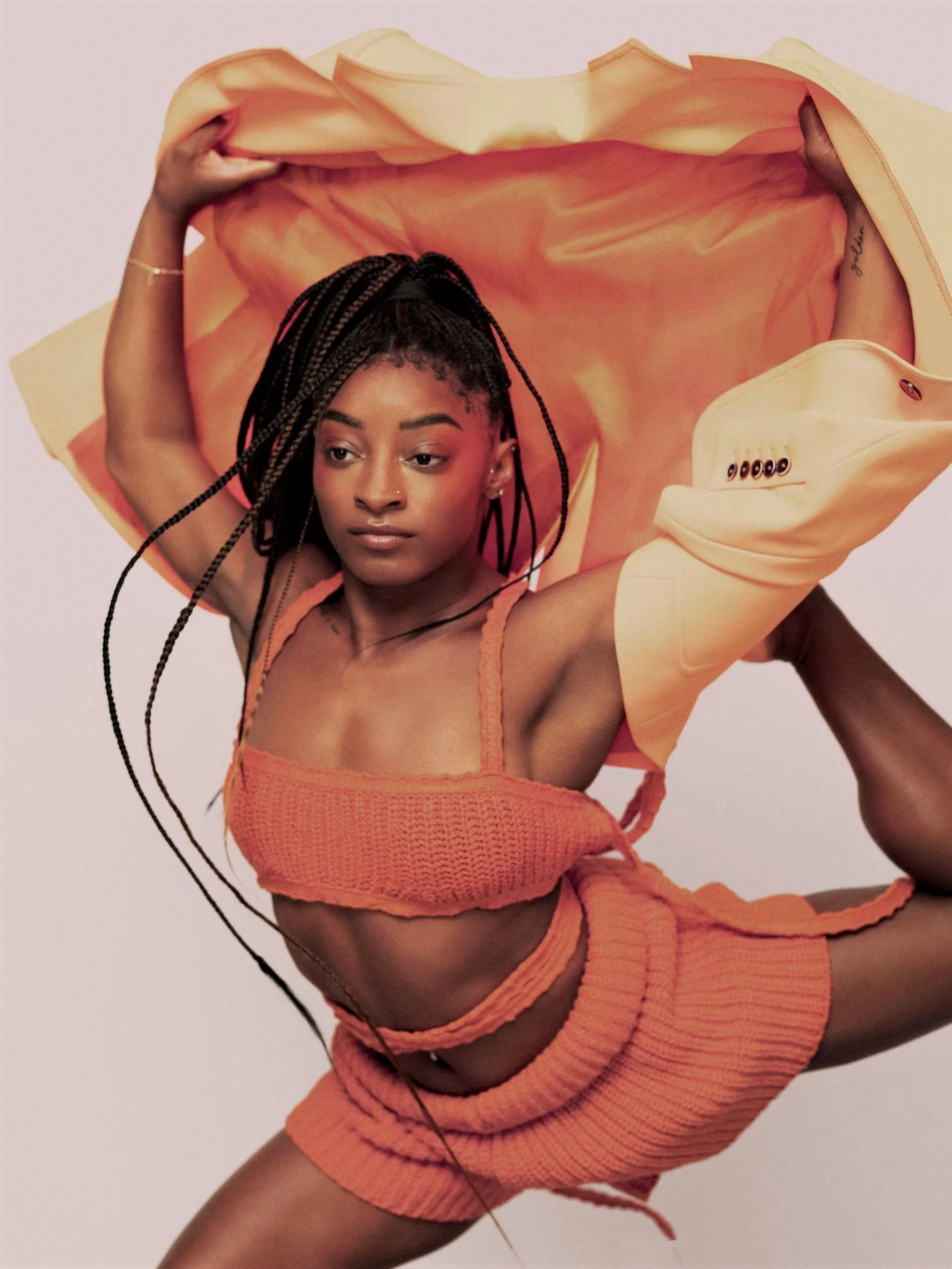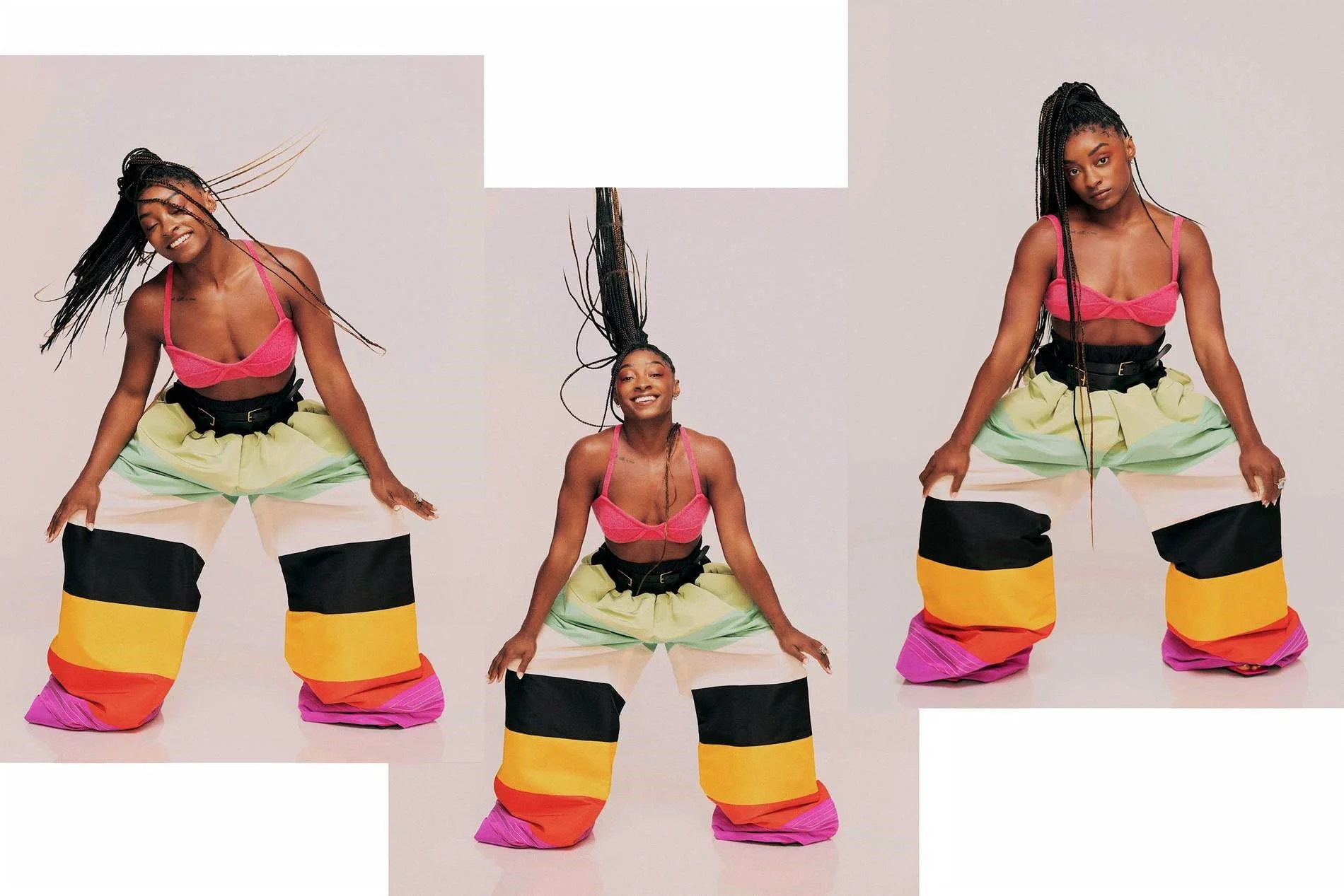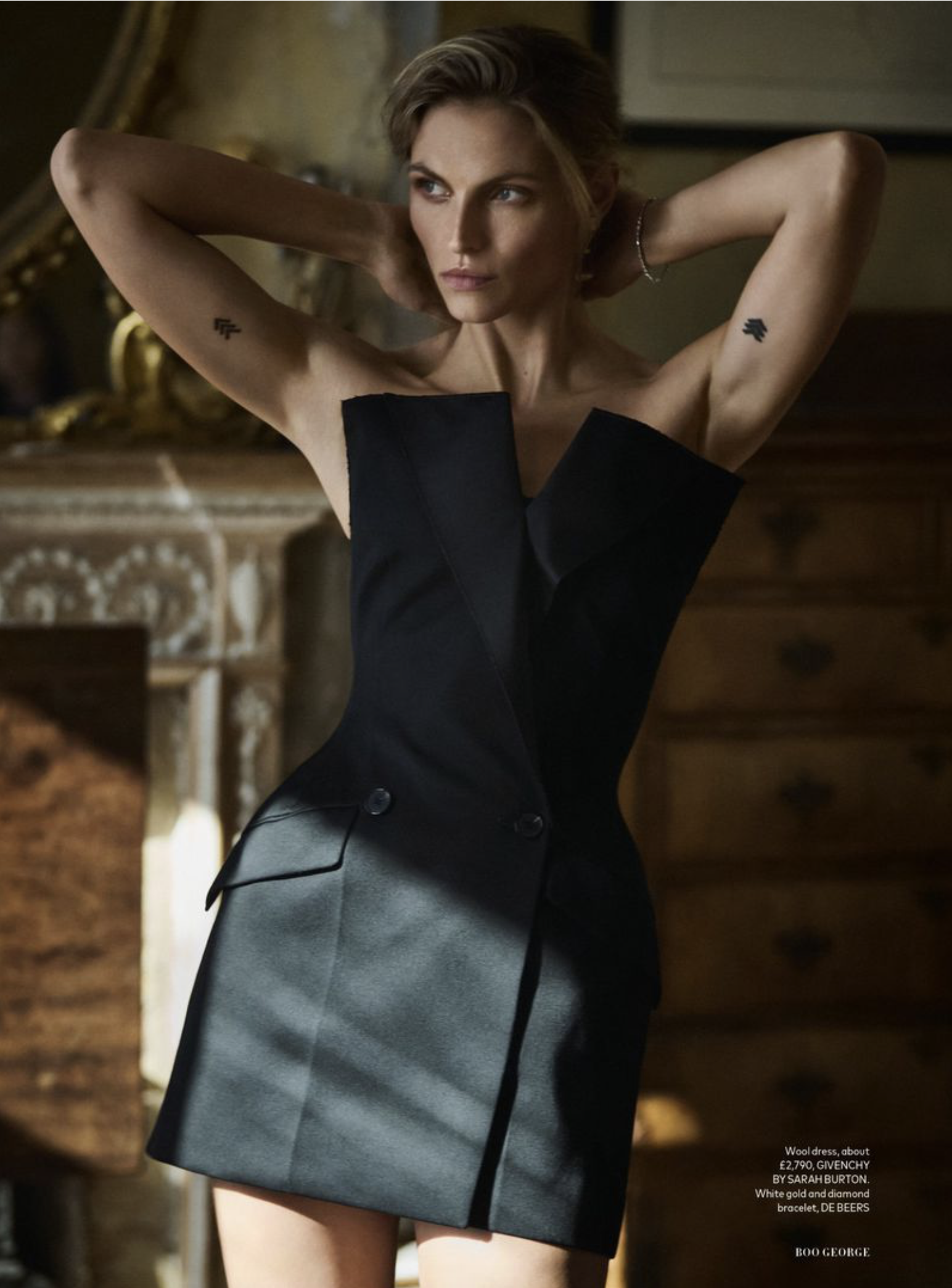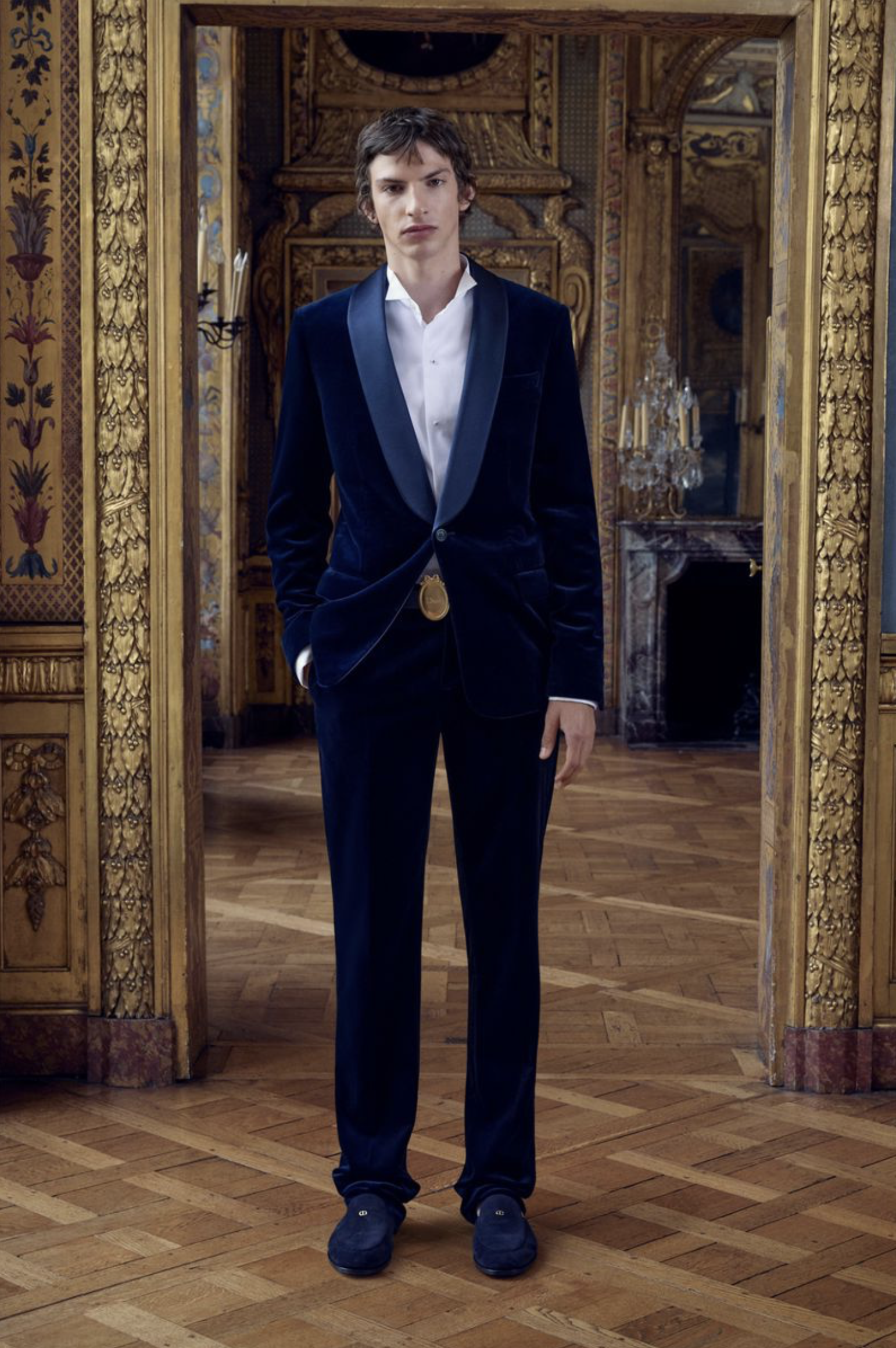Simone Biles Finds 'A New High' in Porter Edit, Lensed by Kennedi Carter
/Update: The divine Simone Biles is engaged! What a beautiful couple — Simone Biles and Jonathan Owens.
There are certain pleasures that come with writing/editing AOC. Checking Net-a-Porter today, an airborne Simone Biles greeted me in ‘A New High’ for the new Porter Edit February 7, 2022 cover story. AOC LOVES Simone Biles in every aspect of her wonderful self. Blessed with unusually strong intuition, I then said to myself “photographed by Kennedi Carter.” Correct, Anne.
Last summer Kennedi Carter photographed Amanda Gorman for Porter Edit, leading me to Google if Simone Biles and Amanda Gorman know each other, as it seems they would get on fabulously together. They do.
Returning to Porter Edit, Ms.. Biles is styled by Shibon Kennedy in bold-colors from Alanui, Anna Quan, Christopher John Rogers, Khaite, King & Tuckfield, Sergio Hudson and more.
We typically think of Simone Biles as being in motion. And the focus of Simone Biles’ interview with Hanna Phiffer is about learning [finally] to develop her relaxation muscle.
A Superstar Gymnast in Rio
The name Simone Biles landed dead-center in the gold medal haul for the American team at the 2016 Summer Olympics in Rio. Biles left Brazil with four golds and a bronze medal, and had achieved subsequent jaw-dropping airborne gymnastic feats — and trophies — rolling into the COVID-delayed 2021 Olympic games in Tokyo.
At least in the larger American progressive values sisterhood, Simone Biles was a well-known and beloved name.
A Different Life Lesson in Tokyo
Phiffer does not write in melodramatic terms about Biles’ challenges in Tokyo. The star gymnast withdrew from the games for a period of time, before returning for a final opportunity to medal — which she did, winning a bronze metal on the balance beam. Biles also earned a silver team medal in Tokyo.
Porter Edit writes that Biles’ body and mind were not “in sync” Something was “off” and she “just kind of crashed”. Later the gymnast said that “she couldn’t see herself in her head”, a condition called the “twisties”, which put her a considerable risk.
As I studied the “twisties” last summer, I was clear that Simone Biles could break her neck and be paralyzed for life.
I was deathly afraid that Simone Biles wouldn’t pull back from competition — being such an alpha woman perfectionist — and have a tragic accident of potentially epic proportions.
In our keen desire to finally bring the discussion of mental health into the sports world, I personally feel that the massive danger Simone Biles faced in Tokyo was underplayed as not being able to handle the pressure and so she got the ‘twisties’.
The star gymnast’s reality was much more complex than that familiar concept — “if the fire’s too hot, get out of the kitchen”. I read much of this commentary about Naomi Osaka’s issues with interviews breaking wide open at the French Open and her subsequent departure from he event.
Biles and Naomi Osaka’s challenges come together in the Porter Edit interview, as if they are woven from the same cloth. This approach feels overly-simplistic to me.
Simone Biles Faced Possible Death or a Broken Neck and Paralysis
On this point, USA Today delivered a more ominous description of the ‘twisties’ with their headline: Simone Biles got the 'twisties' during the vault and it could have been deadly, The article quotes a Twitter explanation that jibes with all the medical articles that I read about Biles’ “twisties”.
When you're flipping or twisting (or both!) it is very disorienting to the human brain. When training new flips and twists, you need external cues to learn how it feels to complete the trick correctly.
Once you've practiced a trick enough, you develop the neural pathways that create kinesthesia which leads to muscle memory. Your brain remembers how your body feels doing the trick and you gain air awareness.
If for any reason, there is a breakdown in communication between mind and body, having a “fearless attitude” can easily result in a broken neck and permanent paralysis, considering the speed and force with which Simone Biles is propelling herself through the air.
The ‘kinesthesia’ leading to muscle memory is in Simone’s joints, in her skin, in her muscles in the form of tiny receptors. One sports doctor explained the perilous danger Biles faced with the narrative: “Imagine that you were driving 80 mph on a crowded freeway. Other cars are passing you at 85 mph and you see a large truck driving very fast in the merge lane, coming your way. And suddenly, you forget how to drive. Literally your mind is blank.”
It seems that Simone Biles deserved a gold medal for composure and not having a total meltdown over the absolute, mortal danger she was facing, even when her practice sessions began going south. In October 2021 Biles was open in another interview about still suffering from ‘twisties’ and she remains afraid of attempting certain of her best moves. At least pre-holidays, they were gone from her routine.
Trust, Twisties and Larry Nassar
Did Simone Biles loose confidence in the system around her — USA Gymnastics and partners — given what they put the young women through with the disgusting tyranny of sexual abuse by team doctor Larry Nasser?
Biles continues her relationship with the organization so that she can bird-dog them. If USA Gymnastics won’t protect young girls from the likes of Larry Nasser, Simone Biles will ride shotgun on the situation.
It would seem that once any of us allows this extreme abuse to surface into the public eye, that there can be no trust in the very institutions to which you have put your very neck and brain function — your spinal cord — on the line, and they offered no help and protection back to you.
Another topic not discussed around Simone Biles’ ‘twisties’ is the shame — the irrational shame — that victims feel in a world that tells women we have caused our own abuse. This is textbook stuff and even being among the loudest voices in the room calling out these fake leaders and professionals — as Biles was and is — doesn’t mean the victim feels no guilt on the world stage.
“To be clear, I blame Larry Nassar and I also blame an entire system that enabled and perpetrated his abuse,” the elite superstar testified before a Senate committee in September 2021. “USA Gymnastics and the United States, Olympic and Paralympic Committee knew that I was abused by their official team doctor long before I was ever made aware of their knowledge.”
THAT reality — which is different than the abuse itself — could easily cause Simone Biles to suffer a mental disconnect with the very organization that brought her to Tokyo. Trust? How in the world can these organizations be trusted.
Personally, I think writers must dig deeper into these topics if they intend to discuss them at all in articles. We all know about Simone Biles and her twisties. This is not fluff stuff.
Mental Health Is Not Only A ‘Women’s’ Problem
All the talk about Biles is her advocacy for mental health. I think her advocacy for being willing to face down “the man” in the form of USA Gymnastics is an even bigger story. Simone Biles didn’t have a confidence problem. She didn’t have an inability to handle stress problem.
Biles — and all the other women at USA Gymnastics — had a Larry Nasser problem, and an institutional problem. A whole crew of biggies put their money, their prestige and their lavish lifestyles ahead of the bodies of these young women. Are they now traumatized by an institutional network that demands that they risk a broken neck to create success for these scumbags? And let’s not forget the FBI that also gave the young women the brushoff. These guys stick together.
Mental Health Is a Large Landscape
My only point is not to lump Simone Biles and Naomi Osaka together — as supportive as they are of each other — and create this singular women’s mental health problem. In the case of Biles, important institutions — including the FBI — have failed her totally.
We live in a bullet-point, bottom-line it world. Mental health is a huge topic with countless layers, and it must be approached with a lot of nuance.
With Naomi, I just read that Osaka received more hate tweets in 2021 than any other tennis player. Way more. And guess who is in second place? Serena. That reality doesn’t leave too much to the imagination when one considers causality.
But in the case of Naomi Osaka, many other things are going on in her life — like over $55 million in endorsements in 2021, way more than Serena ever had at this state of her career. And Naomi insists on being hands on with her endorsements. Literally she wants to approve the salads created in her name. These topics are all discussed in her Netflix documentary series. I’m not sure there’s a CEO for Naomi Osaka, Inc.
Osaka may no longer have time or interest to practice tennis. Her $55 million worth of annual endorsement contracts have no performance clause, according to Forbes. That is unusual and puts Naomi in the driver’s seat. The contracts might not be renewed, but Forbes says she doesn’t have to win — or even play.
But these massive Twitter hate stats against Naomi are unbearable to read about anyone. I’m sure playing for Japan in Tokyo drew much of the hate. And for Serena to still be in the line of fire is just inexcusable. They are cruel for both Naomi and Serena, and they make me sick to my stomach.
On the topic of mental health, I’m sure this social media hate is terribly difficult for women who are paid millions to be front and center on social media. Imagine Serena’s precious daughter Olympia reading these disgusting comments to her mother.
Please note that the focus of Simone Biles’ interview with Hanna Phiffer is about learning [finally] to develop her relaxation muscle. I gave you no clues how Biles does it, after this rant on behalf of the sisterhood. I better go practice myself. ~ Anne
